History of the Nencki Library
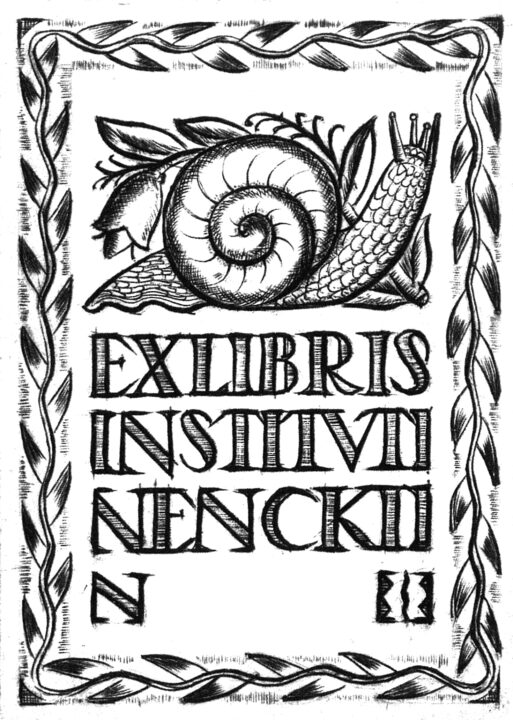
The history of the Institute’s library began with the establishment of the Marceli Nencki Institute in 1911. Until then, individual research departments had their own small book collections for their own needs. Researchers also used the Central Library of the Warsaw Scientific Society, or the University Library. The merger of the Institute’s three departments – neurobiology, physiology, and general biology – in 1920, created the basis for organizing a Central Library on its own. The field stations located outside Warsaw also had their own book collections, but they were organisationally connected with the Central Library, which was located in the building at 8 Śniadeckich St. Apart from that, these were the collections of the Library of the Hydrobiological Station in Wigry, the Marine Station in Hel, the Department of Biometry, the Department of Neurobiology, and the Biological Station in Pinsk.
1920s-1939s
According to first reports, the Library’s book collection was very modest, and in 1920, it consisted of only 695 volumes. However, in 1927, it had 7,040 volumes (periodicals, continuous publications, compact prints and prints). The last published data concerning the Library’s activity comes from the end of 1937. The Central Library of the Nencki Institute had 1,765 scientific works in 3,600 volumes, 350 titles of both domestic and foreign journals in 8,000 volumes, over 8,500 prints, of which over 5,000 were catalogued and arranged. The main source of the collection was the Institute’s exchange of publications with scientific centers in Poland and abroad. The Library exchanged its own publications with 36 countries, 203 foreign institutions, and 47 domestic institutions. It subscribed to 30 journal titles. It also made purchases to fill in missing volumes of journals. About 400 periodical titles (330 foreign and 70 Polish) were received on a current basis. The Library’s collections were used on a regular basis by around 100 scientists, and about 1,000 volumes were borrowed from outside the Library each year.
In the early days, the Library was staffed by junior researchers: Stanisława Dembowska, Genowefa Szwejkowska, and Stanisław Gartkiewicz, who in 1925 compiled a “Catalogue of foreign biological journals held in Polish libraries”. It contained data from 95 Polish libraries, and listed 965 titles of journals held within those libraries, providing information on the volumes and yearbooks contained. In 1925, Tadeusz Kulisiewicz designed an exlibris for the Nencki Library, which is being used until today. In 1929-34, the position of librarian was held by Maria Pochapinska, an administrative employee of the Institute. In November 1933, Aniela Gruszczynska (Szwejcerowa) was hired.
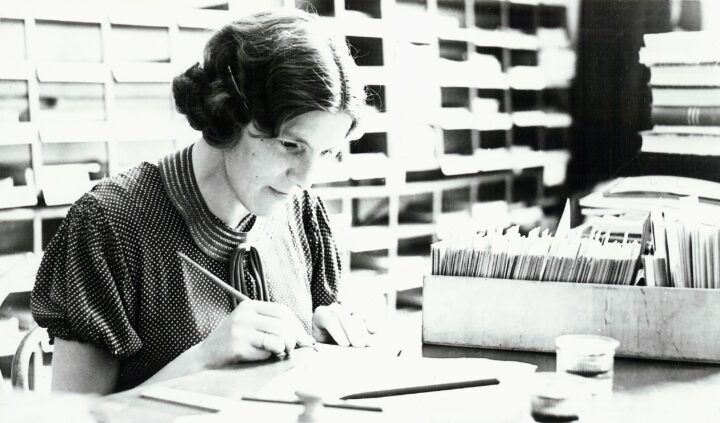
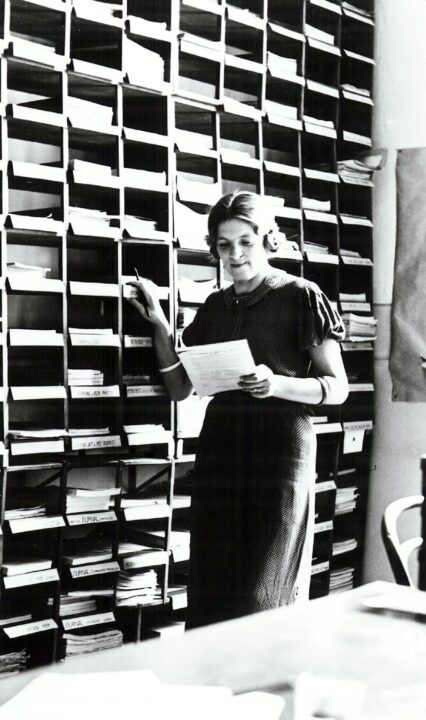
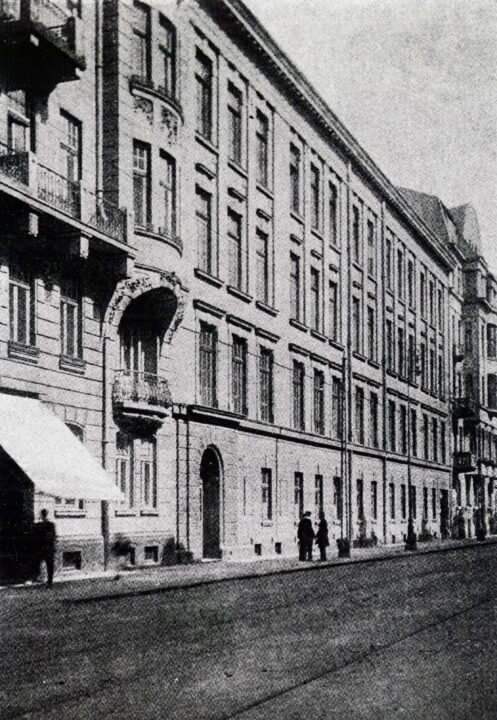
She was the first professional librarian of the institution. She organized the Institute of Experimental Biology Library from scratch. She worked on collecting, compiling, and making available, the book collection. She strived to link library activities with related institutions, so that the resources of the entire country could be accessible to the staff of the home institution. She was active in international cooperation in the exchange of publications with nearly 200 foreign institutions. It also provided scientific information on sought-after journal items.
Further successful development of the Central Library was hampered by the outbreak of World War II in September 1939, and the occupation.
1940s-1990s
The outbreak of war caused the destruction of the Library, and its valuable book collection. The collections in the Research Stations of the Institute were also completely destroyed. Only a few dozen volumes have survived to the present day. After the end of the Second World War, a group of surviving Institute staff members came together and undertook to rebuild the Institute. These were Professors Jan and Stanisława Dembowski, Jerzy Konorski, and Liliana Lubińska, Włodzimierz, and Stella Niemierko. Aniela Szwejcerowa (née Gruszczyńska), the pre-war Director of the Library, was also among them.
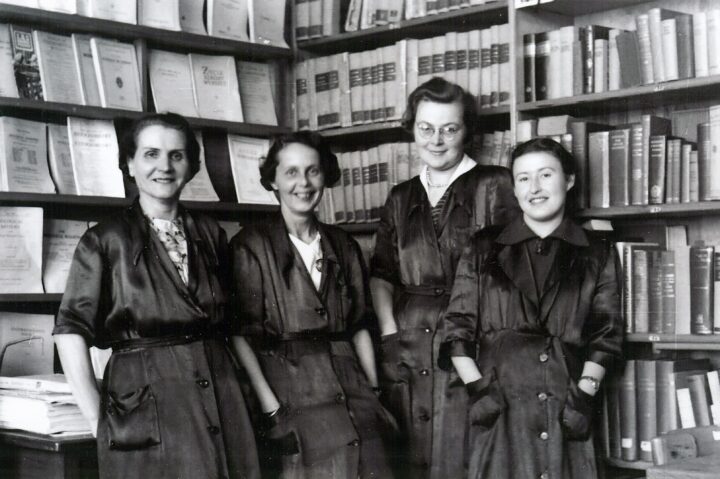
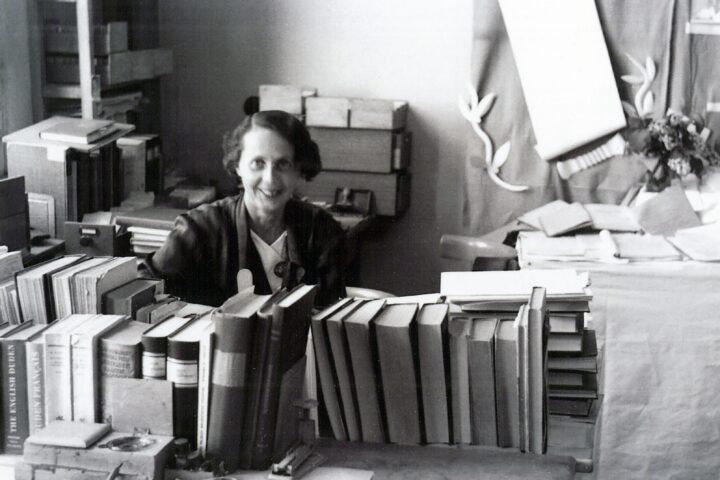
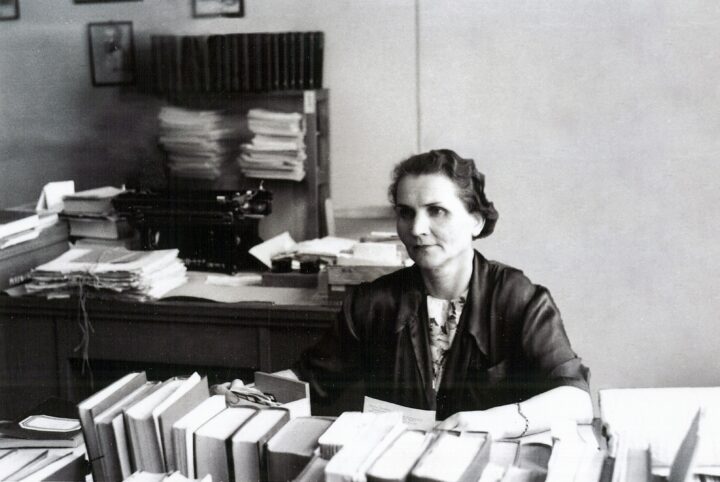
Until 1954, the Institute and the Library were located in Lodz. The reconstruction of the Library was started from scratch, not only in terms of the book collection, but also staff, equipment, and modest financial means. In the initial period, there was a lack of publications to exchange, as the first post-war volumes began to appear regularly only in the 1950s. Starting with a zero volume collection in Lodz, by the time the Library was moved to Warsaw, it already amounted to over 10,000 volumes, and about 700 periodical titles were received on a regular basis. The Library returned to information and documentation work.
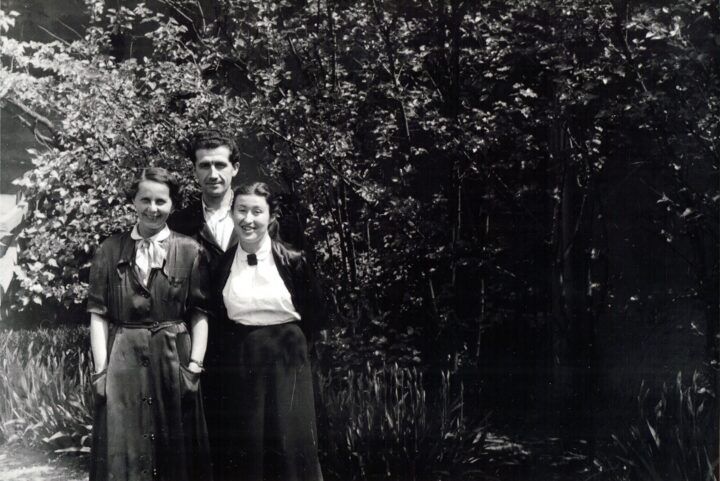

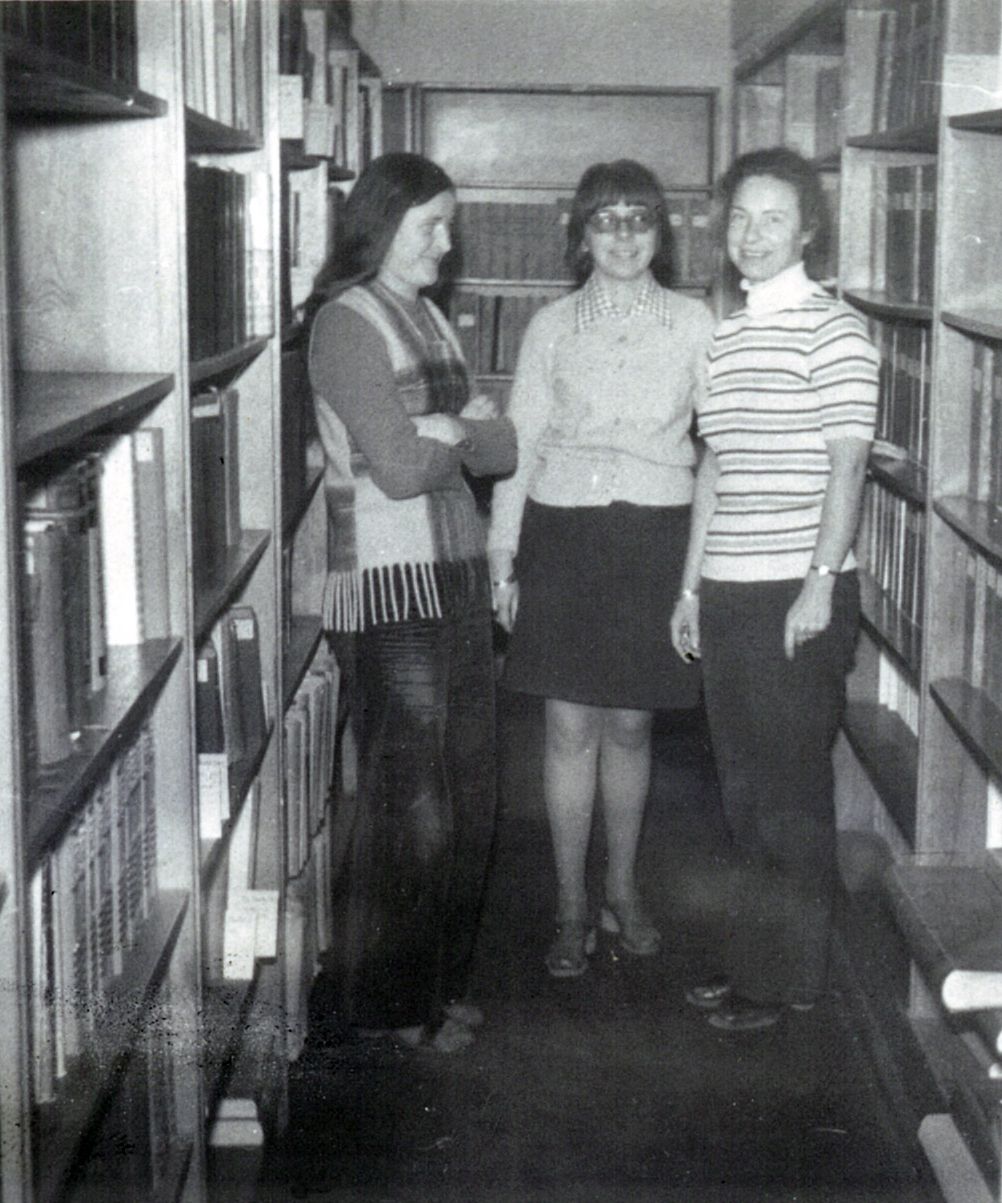
In 1952, the Library published the “Directory of foreign biological periodicals and continuous publications held in Polish libraries. Bibliographic materials” edited by Aniela Szwejcerowa and her husband. In the same year, the “Directory of Polish biological periodicals and serial publications held in Polish libraries” edited by Aniela Szwejcerowa and Jadwiga Groszyńska was also published. The publisher of these lists, were the M. Nencki State Institute of Experimental Biology.
In 1959, the Library staff prepared the second edition of the “Inventory of foreign biological journals and continuous publications held in Polish libraries. Bibliographic materials”. It was not possible to publish in printed form, and until today, it has been stored in the Library in the form of typescript.
In the years 1966-1977, three editions of the “Catalogue of periodicals and continuous publications” kept in the library of the Nencki Institute were prepared. In addition, the Library staff made inventories of the Institute’s employees.
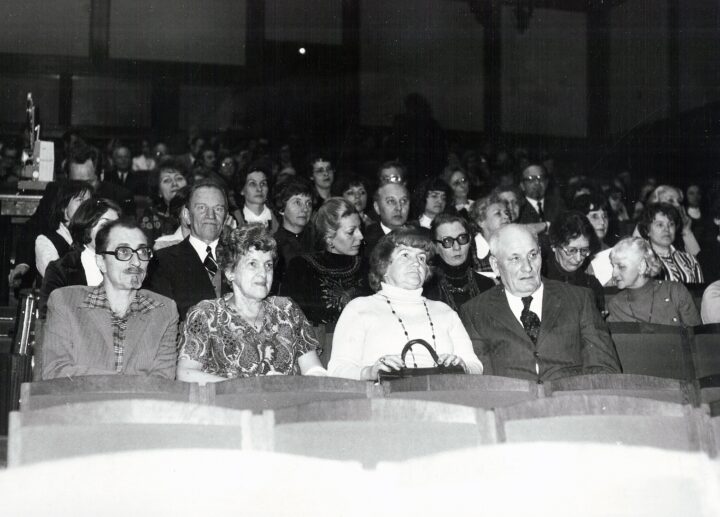
Celebrations of the 60th anniversary of the Nencki Institute, Palace of Culture and Science, Warsaw 1978.

Celebration of the 60th anniversary of the Nencki Institute, Palace of Culture and Science, Warsaw 1978.
Moving the Institute to a new building in Warsaw allowed for a faster growth of the collection, and also considerably expanded the circle of users. The development of the Library was possible thanks to extensive subscriptions to journals and the purchases of printed matter, and first of all, exchanges of the Institute’s own publications – Acta Biologiae Experimentalis (in 1928-1969) transformed into Acta Neurobiologiae Expoerimentalis (from 1970 to the present), Polish Archives of Hydrobiology (1956-1974), Acta Protozoologica (1963-2006) and Laboratory Animals (published in 1973-1986). Contacts with related institutions around the world were expanded. The library had exchanges with more than a thousand scientific institutions in 66 countries. In 1960-1970, the Library’s book collection amounted to ca. 50 thousand volumes. In 1960-1970, the Library collection amounted to 50 thousand volumes, half of which were periodicals and continuous publications. Over 1,000 titles of journals were received on a regular basis, with over 700 titles coming from these exchanges. By 1968, the library of the Nencki Institute had again become the largest biological library in the country, excluding zoological and botanical literature.

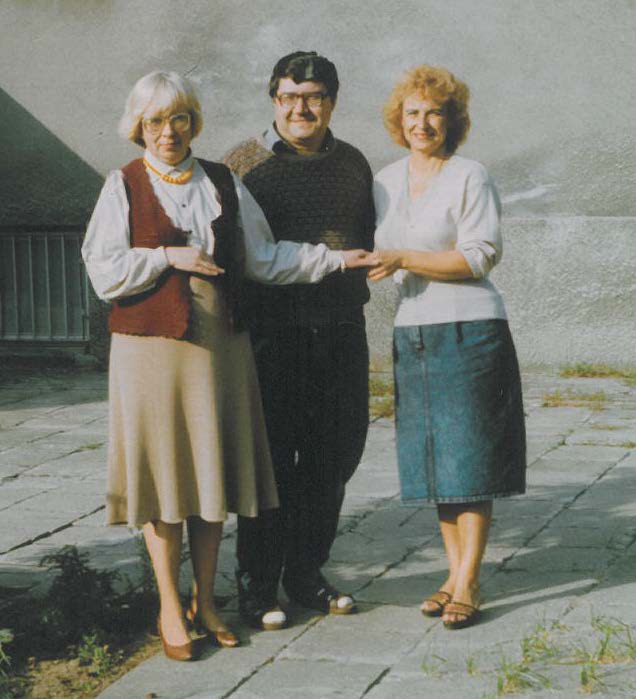
From the 1990s – present
Henryk Adler, who had been associated with the Institute since 1954, retired in 1991. He held the managerial position for 31 years. He was succeeded by Jan Bienias, M.A.

Under new management of the Institute, led by Professor Maciej Nałęcz, computerization in the Library has been slowly progressing since 1992. First computers and databases were purchased: Medline, on CD-ROM with contents from 1966, and current issues of Current Contents series Life Sciences, first available on floppy disks for one workstation. In the beginning, these databases could be accessed only in the newly created computer reading room. In the following years, every researcher or PhD student could connect to the server located in the reading room through a remote connection. The achievements of the new generation of computer information technology were highly appreciated by readers, because they could find information very quickly, about interesting scientific literature. They were also able to set up their research profile, and print out requests to send prints from authors of publications.
At that time, the Library was equipped with two modern Xerox copiers. Each employee could use them by means of magnetic cards with a programmed number of prints (100 or 1000). At that time, we were one of the first libraries in the country to use this method of making individual copies of scientific publications. Currently, any person can use the xerography and scanner, which are billed on a monthly basis, because all research labs have their own access code.
At the end of 1992, the Library’s storerooms were completely renovated, and the collection was moved from traditional storage (wooden shelving), to compact storage (metal shelving on rails). As a result of this relocation, a significant storage reserve was obtained.
In 1995, a general renovation of library rooms was carried out. The library was equipped with modern furniture and computer equipment. Previous rooms changed their decor. In the general reading-room, special exhibition shelves were installed, where in suitable plastic “shirts” new publications were placed. Nowadays, new issues of magazines are put out on a regular basis as they come in, not every two weeks as it used to be in the past.
An efficient ventilation system was installed in the copy room, and air conditioning in the computer reading room. After the renovation was completed, it was decided to provide all readers with free access to the entire collection. After enlarging the storeroom by one room, a “quiet place” was created for readers to work.
In 1996, the compilation of the “Inventory of publications of the Institute’s staff for the years 1992-1996” began. This work is continued, and analogous lists of publications are produced every year.
At the same time, the Institute became a participant in the Agreement of Scientific Institutions of PAN in Warsaw, concerning the computerization of libraries. In December 1996, after many lengthy negotiations, the library computer system Horizon was selected and purchased, with funds coming from the State Committee for Scientific Research. After an appropriate training of staff, in 1997, the program was installed on the NSC server in the Warsaw University Information Center, and the entry of library data began. The catalogued items were provided with library labels with barcodes. Apart from the computer catalog, the alphabetical card catalog of printed matter and periodicals is still being supplemented. The cooperation between the Warsaw University Library and the Library of the Nencki Institute, within the framework of the NUKAT National Universal Central Catalogue, continues.
Several offers to use electronic journals were made to national libraries in 2000. The Nencki Institute Library joined the Consortium formed by Lange & Springer, which offered access to 236 Academic Press titles. This access included the entire journal holdings from the first volumes. With the acquisition of Academic Press by Elsevier, the terms of the license have changed adversely. The resource was restricted, and is currently available from 1997.
In 2001, the Library was part of a consortium organized by Ebsco, which had an agreement to provide online access to the full text of Academic Press journals (IDEAL database). Moreover, through Swets & Blackwell company, the Library had access to over 500 titles of Springer Verlag journals (Link Springer database), and through ABE Marketing company (supplier of subscription to foreign journals in printed as well as on-line version), we had access to over 1.000 titles of Elsevier Science journals (ScienceDirect – Web Editions database). Access to these databases, and to full texts, was possible from all computers connected to the Institute’s network. In November 2002, we also gained access to the journals of Kluwer Academic Publishers (Ovid database).
In 2003, ICM UW took over consortium affairs, offering access to articles published in 1997, and later by Elsevier, Academic Press, Springer Verlag and Kluwer Academic Publishers. In an effort to save money, the library has discontinued print subscriptions to the above publications. From now on, only online access is available.
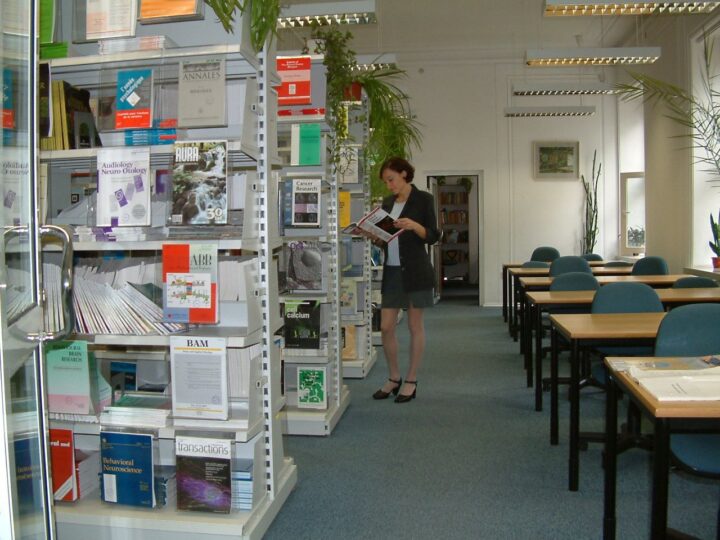
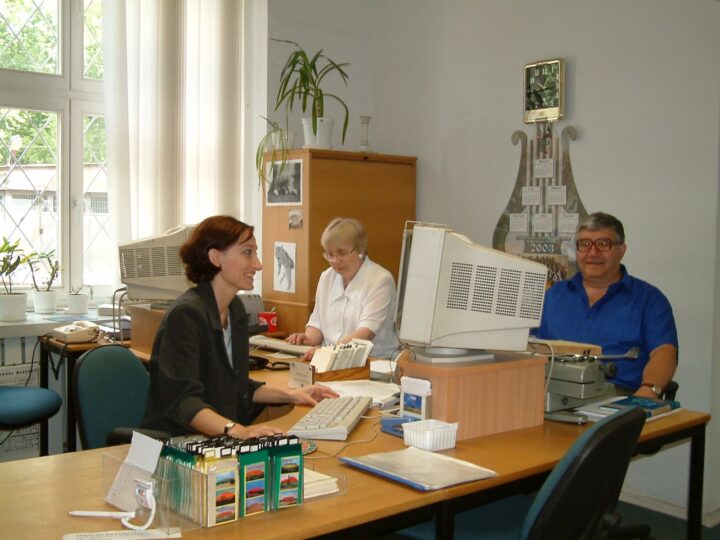
Currently, the exchange is carried out with only a few centers in the world, mainly due to the fact that the Nencki Institute publishes only one journal: Acta Neurobiologiae Experimentalis (ANE), currently in open access. The abandonment of the print version of journals is common among modern publishers. That is why many foreign, as well as domestic contractors, have stopped sending their own publications. At the moment, the Library exchanges the ANE journal with five foreign partners, and one domestic partner.

Nencki Institute, Warsaw 2008.
According to the decision of the Director of the Institute, since 2009, the Library, apart from the archive of its own publications, has also kept the Multimedia Archive.
In 2014, the Library staff began collecting publication metadata (with IF and MNiSW scores plotted) in the Scientific Publications Database available online. Currently, data for the period 2012-2020 are available in the database, and data on new publications are entered on an ongoing basis.
Since 2017, the Library also administers the collection of works (paintings, posters and prints) included in the Nencki Art Collection.

Nencki Institute, Warsaw 2018. Photo by A. Mirgos.
As of the end of 2020, the Nencki Library’s book collection consists of 24,342 volumes, including a collection of doctoral and postdoctoral theses comprising 708 works. The collection of 51 periodicals, including 34 foreign subscribed titles, is in its current form. The total collection of journals comprises 1,484 titles and 50,836 volumes. The total collection amounts to 75.178 volumes.
The Nencki Library cooperates with the Virtual Library of Science (ICM UW), thanks to which it has access to full texts of articles published in journals belonging to Elsevier Science (ScienceDirect), Springer Verlag (LinkSpringer), Wiley Online Library, Nature and Science journals and databases: Scopus, Web of Science (Clarivate Web of Science Core Collection, InCites Journal Citation Reports) and Ebsco Host (access to 16 databases).
Electronic versions of subscribed journals are made available through ABE/IPS, and now Ebsco. As part of several consortia funded by the Ministry of Science and Higher Education (currently MEiN), the Library has online access to journals and publications of the following companies: Karger, Lippincott Williams & Wilkins, Oxford University Press (Life Sciences collection), American Chemical Society, Nature Group, Taylor & Francis, PsycArticles. By 2020, we had access to the journal via video: JOVE. Access to the databases, as well as to the full texts of the journals, is possible from all computers connected to the Institute’s network, and from computers located at the Research Station in Mikolajki.
The Library collects scientific output of the Institute’s employees, and every year, prepares and compiles a bibliographic list of the Institute’s publications, published as a collection of full-text articles, available in printed and electronic formats.
The Library staff also takes part in the preparation, processing, and reporting of data on the publications of our Institute’s employees for the Ministry of Science and Higher Education (currently the Ministry of Science and Higher Education), and transferring them to the Science Information System within the Integrated Information System on Science and Higher Education i.e. to the reporting module of the Polish Scientific Bibliography.
In Autumn 2010, the Nencki Library joined the Consortium ‘Digital Repository of the Scientific Institutes’ (RCIN), which associates scientific institutes, research institutes, and other scientific institutions. (RCIN), bringing together 15 Institutes of the Polish Academy of Sciences, and one branch Institute. More information can be found on our website, under Digital Repository / RCIN Project (2011-2014).
In 2018-2021, the Institute’s Library implemented another project as part of the OZwRCIN (Open Resources in the Digital Repository of Scientific Institutes) Consortium, co-created by 16 scientific institutes from across the country. The leader of the OZwRCIN Project was the Mathematical Institute of the Polish Academy of Sciences in Warsaw. More information can be found on our website, under the OZwRCIN Project tab.

From left: Mariusz Pasznik, Maja Brzozowska, Agnieszka Brachfogel, Katarzyna Gardocka, Agnieszka Kownacka.
Warsaw 2021. Photo by A. Mirgos.
After 54 years of working in the Library of the Nencki Institute (including: 30 years as the head), Jan Bienias, M.Sc. has retired. On 30 December 2021 the Library staff prepared a modest farewell, presenting Mr Jan with small gifts to thank him for his joint work.
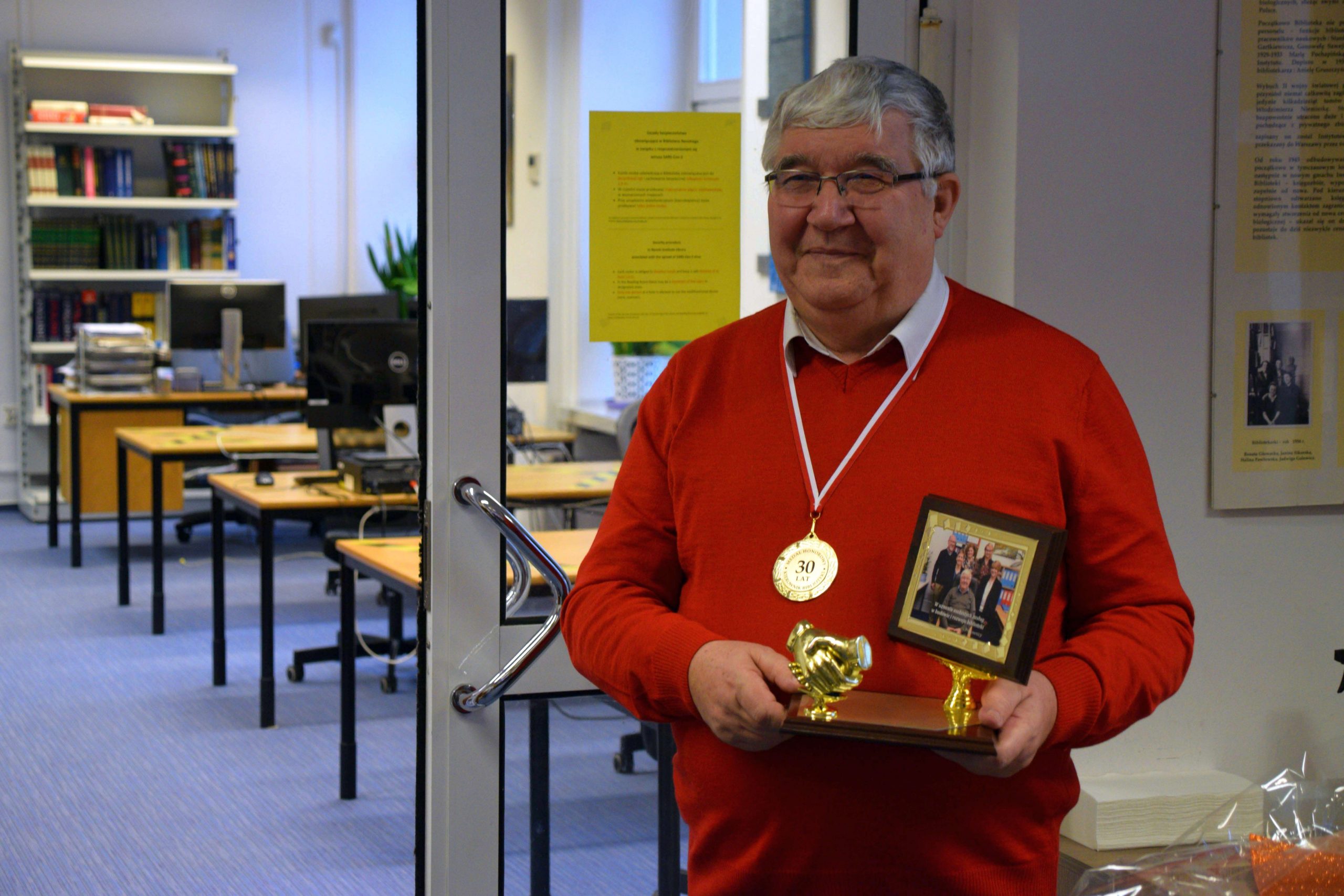
In January 2022, the competition for the position of Head of the Library of the Nencki Institute was settled. Maja Brzozowska, MA, a graduate of the Faculty of Journalism, Information and Book Studies at the University of Warsaw, became the new Library Manager. Maja Brzozowska, MA, has been involved with the Library of the Nencki Institute since 2013. She took over her duties from February 2022.

Membership since year 1923
Library Managers:
- Aniela Gruszczyńska-Szwejcerowa: 1946-1959
- Henryk Adler: 1960-1991
- Jan Bienias: 1991-2021
- Maja Brzozowska: 2022-
Employees:
- Stanisława Dembowska: 1923
- Stanisław Gartkiewicz: 1924-1925
- Genewefa Szwejkowska: 1926-1929
- Maria Pochapińska: 1929-1933
- Aniela Gruszczyńska-Szwejcerowa: 1933-1939, 1946-1959
- Jadwiga Groszyńska: 1949-1954
- Renata Głowacka: 1952-1975
- Janina Sikorska: 1952-1976
- Halina Pawłowska: 1952-1954
- Jadwiga Galewicz: 1953-1955
- Henryk Adler: 1954-1991
- Teresa Czarcińska: 1955-1961
- Irena Ziemiaczkowska: 1955-1962
- Otokar Dreiseitel: 1955-1975
- Stefania Lewczyk: 1957-1992
- Barbara Dudkiewicz: 1961-1962
- Ewa Borkowska: 1961-1963
- Urszula Merle: 1962-1964
- Maria Głowacka: 1963
- Mirosława Kaniewska: 1963-1968
- Helena Choińska: 1965-1975
- Ewa Żakowicz: 1966
- Maria Zaremba: 1966-1970
- Jan Bienias: 1967-2021
- Maria Gerlach: 1967, 1969-2008
- Maria Olczak: 1968-1969
- Elżbieta Sobiecka: 1969-1970
- Maria Pietralik-Kaczor: 1974-1979
- Małgorzata Gurtat-Głośniak: 1975-1977
- Jolanta Raurowicz-Czajkowska: 1975-1981
- Danuta Delimat: 1980-1983
- Krystyna Kobylańska-Naumowska: 1993-2003
- Monika Małecka-Krawczyk: 1999-2018
- Justyna Tutaj: 2003-2008
- Katarzyna Nożewska: 2008-2013
- Mariusz Pasznik: 2011-2023
- Maja Brzozowska: 2013-
- Paweł Fiszer: 2018-2021
- Agnieszka Kownacka: 2019-
- Katarzyna Gardocka: 2019-
- Agnieszka Brachfogel: 2021-


